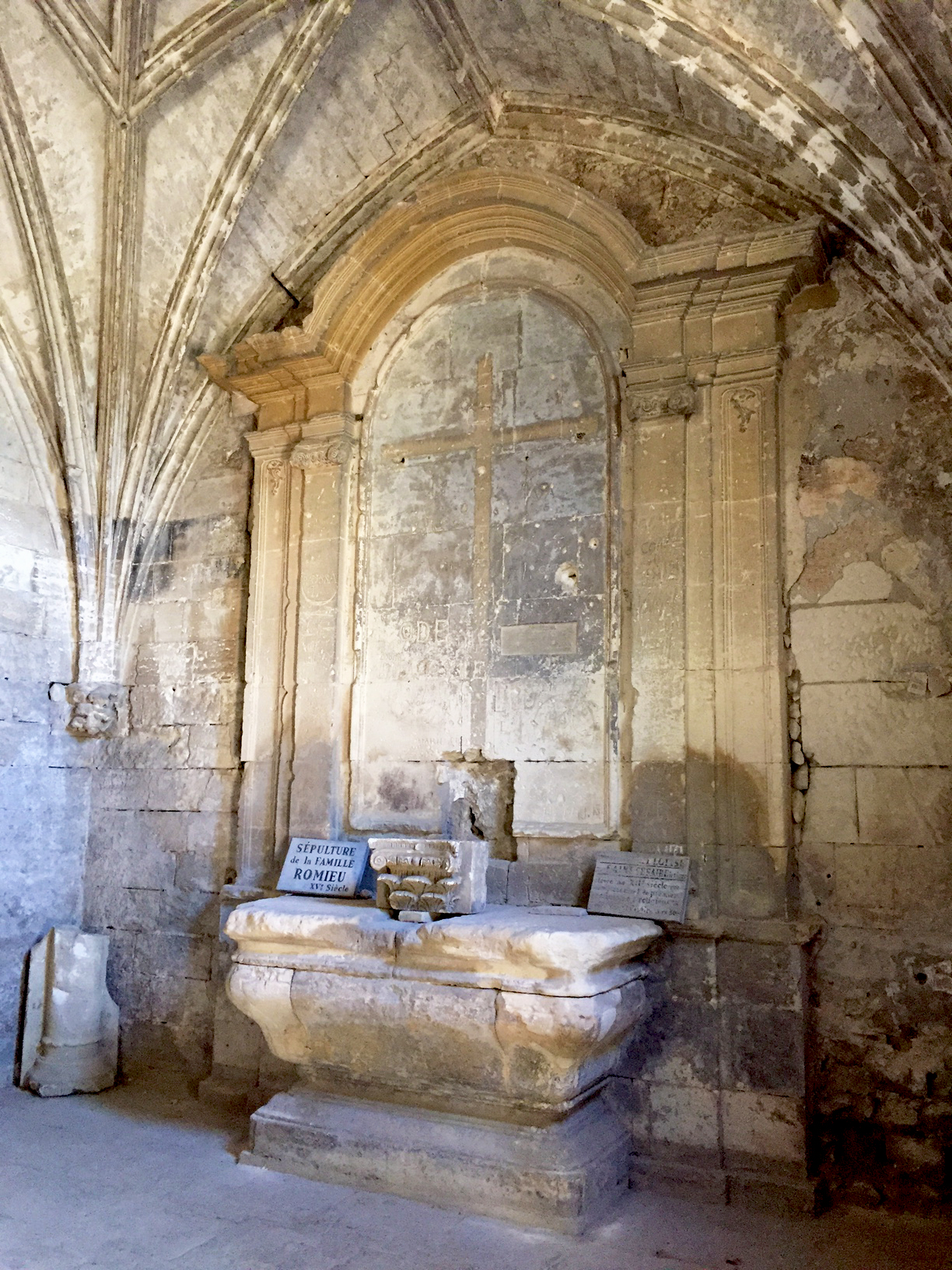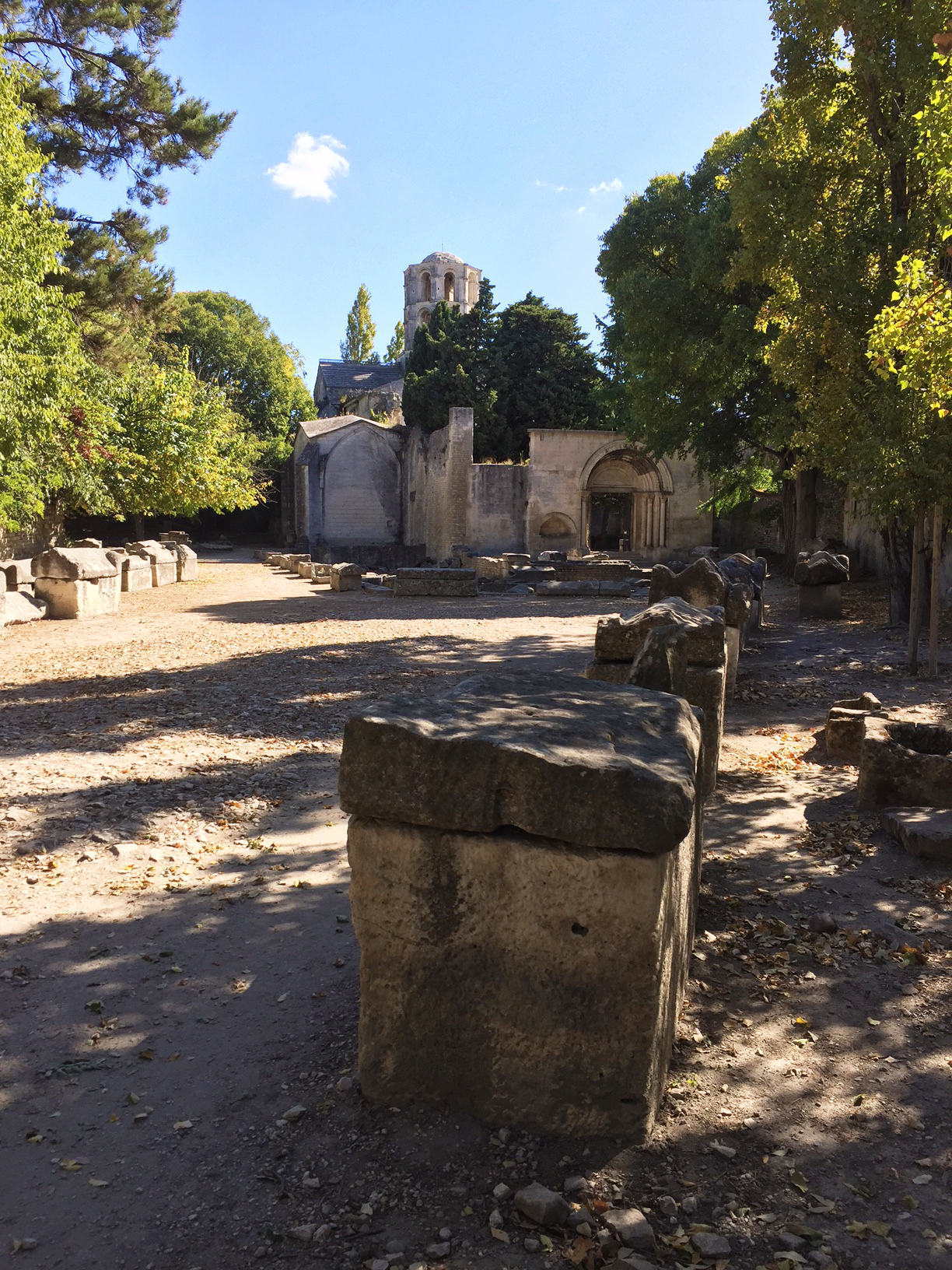Paris has the Champs-Elysées; Arles has the Alyscamps. In the Provençal language, Alyscamps means the Elysian Fields and refers to the entire necropolis that was developed along the via Aurelia. The road started in Rome and followed the Mediterranean coast all the way to Arles.
Alley of the dead!
Roman cities did not allow burials within the city limits. Roads immediately outside of the city were often lined with tombs and mausoleums. The Alyscamps in Arles are located just a bit south of the old city gates and the alley is dotted with sarcophagi.
Romanesque arch of Saint-Cézaire church
As Christianity gradually took over Roman theology, the site continued to be used for burials and the Saint-Cézaire church was built in the 11th century. Its Romanesque arch still stands at the entrance, at the western side; chapel Saint-Accurse was built next to it in 1520.
Saint-Accurse chapel (1520)
Alley to Saint-Honorat church
Saint-Honorat church was built in the 12th century, on the western side.
Entrance to Saint-Honorat church. Check out the grotesque at top right. Gargoyles have waterspouts, grotesques do not.
Carved sarcophagus inside Saint-Honorat
The necropolis was looted during the Renaissance and pillaged again in the 19th century when sarcophagi were appropriated by farmers to be used as troughs for animals. But the most beautiful examples were preserved and are on view at the Musée Arles Antiques.
Courtyard at Saint-Honorat
We visited the Alyscamps shortly after opening hour and almost had the place to ourselves. The courtyard of Saint-Honorat was a bit spooky with its grotesque carvings, stark walls, tall skinny trees, and birds nesting between the stones. Even in daylight, the atmosphere of the Alyscamps was quite mysterious and yet serene. No wonder Vincent van Gogh was inspired by that location when he sojourned in Arles. But that’s another blog post…








